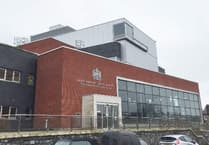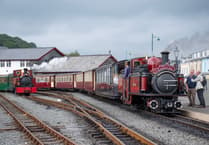An historical novel set in 1969 during the Welsh road signs and anti-investiture campaigns has been translated from Welsh.
Paint! by Angharad Tomos has been published in English by Gwasg Carreg Gwalch.
The original Welsh work by the renowned author has gained critical praise and recognition and makes a valuable contribution to raising awareness of Welsh culture and history.
This novel for young people consists of a fictional first person narrative by Robat/Robert Aneurin – a teenage pupil at Segontium School, Caernarfon in 1969, the year of Prince Charles’ visit to the Aberystwyth Urdd Eisteddfod and his investiture as Prince of Wales at Caernarfon Castle, as well as the first moon landing.
It is also a time when Robat grows up in terms of social awareness and personal relationships.
It is brought to life through the experiences of Robat and his friends – including Philip who is English – as well as the involvement of Robat and his sister Megan in protesting in different ways in support of the Welsh language and against the pomp and pageantry in Caernarfon resulting in a raised awareness of Welsh history not taught in schools.
Robat is typical of his age group and his life consists of his family and friends, his bird watching and drawing hobbies, the local community and school and brushes with adults in authority as well as teenage growing pains and concerns about the opposite sex all of which feature.
The author presents a convincing flavour of the period and community as regards the ‘Big Show’ or circus of the investiture as well as school life where lessons are all in English despite the vast majority of pupils and staff being Welsh speaking – echoes of Dafydd Iwan’s song.
The paint of the title refers to the controversial sprucing up of the town for the investiture, but also to the painting of English road signs by Cymdeithas yr Iaith and its duality and ambiguity perfectly suits the content where individuals and groups present differing and changing opinions which reflect enthusiasm and excitement but also disappointment and despair.
“There is an eager anticipation,” said Angharad, “for the translation of this novel.
“The novel is a part of the current discussion about identity and who we are.”
School consists of classroom japes and tensions with teachers against the educational, adolescent and political background whilst competing in a choir in Aberystwyth, accompanying his sister to paint signs, welcoming a new pupil from Runcorn and a dramatic banner protest all provide natural opportunities to consider history in a real context.
The book’s choice of type suggests handwriting and the inclusion of archived photographs as well as lively hand drawn graphics and cartoon gems which illustrate, enhance or provide commentary on the text.
Paint! (translated from the Welsh) is in bookshops and online at www.carreg.gwalch.cymru and the Books Council of Wales at www.gwales.com





Comments
This article has no comments yet. Be the first to leave a comment.